1932 Rolls-Royce 20/25HP Park Ward Saloon - barnfind project
Discussion
EddyP said:
Forget WD-40 for freeing off rusted bolts etc. you need something much stronger, plus gas is a decent penetrating fluid but I've found things that it wouldn't undo before, however a mix of ATF with 5% acetone has undone some stuff I thought would never come undone, you're going to need it, and heat!
Back when I played with rusty old Minis Plus Gas was certainly superior to WD40. The one I hear a lot about (although not tried myself) is PB Blaster, that according to the internet is basically spray on magic.Thoroughly enjoying this thread, and will continue to follow. I also think it would be great if the leather could be saved. It's part of the car's story/identity.
Hello all,
Many thanks for the positive comments and suggestions - both about the leather and part replacements via 3D scanning and additive manufacturing.
I finally have a chance to sit down and update the thread - so here we have the Big Post-Easter Update!
Inspired by your comments, I have given the leather another complete clean and feed and we are now getting somewhere. It no longer smells and you are unlikely to catch anything nasty from it! I have been in contact with Steve Merrett at Leathercare Ltd in Knutsford on the subject - he is ex-Connolly and has been very generous with his information about the challenges of old leather. While I might get to a position where the current leather is stable, it may well not be strong enough anymore to take the loads associated with restitching etc. But time will tell. In other positive interior news, I have got the rear arm rest to move (!) and given it a clean.... so that is the leather "saved" for now.
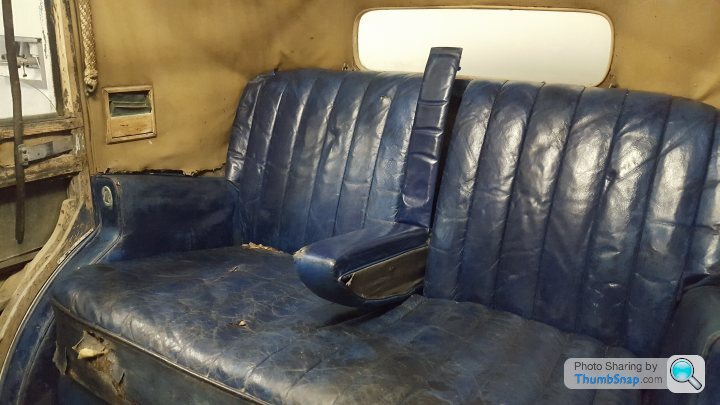
Having got the leather sorted, I have turned my attention to the rest of the interior - notably the dash, pedalbox and front bulkhead. Again it has been a process of gentle cleaning.... the pictures below are the "before" / "after" the clean!
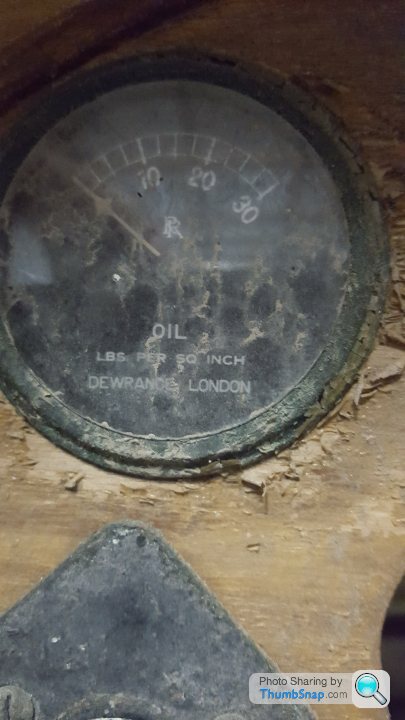
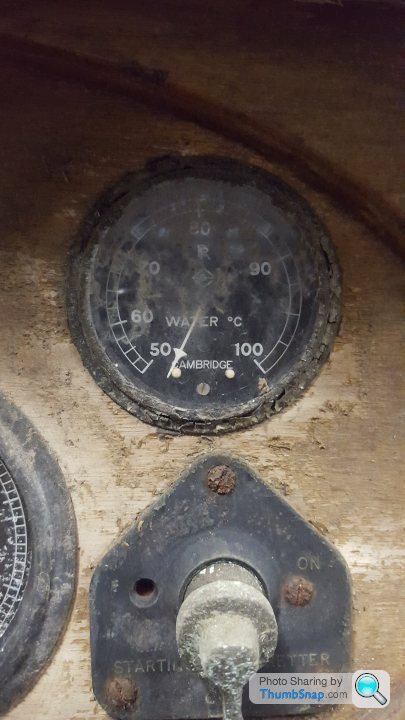
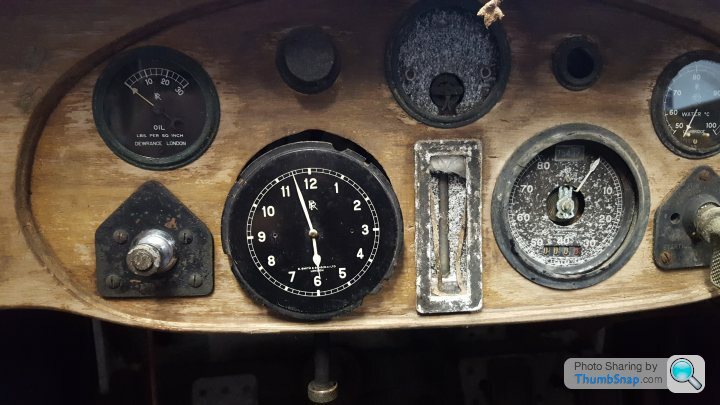
One element of the dashboard which puzzled me was the black "house" shaped object on the left side. After some struggling with it, I managed to get it to move and low and behold - a cigar ashtray! After some prodding and cleaning, I was surprised to find it still had ash in it from all those years ago..... !!! It all now moves freely and will be restored in due course.
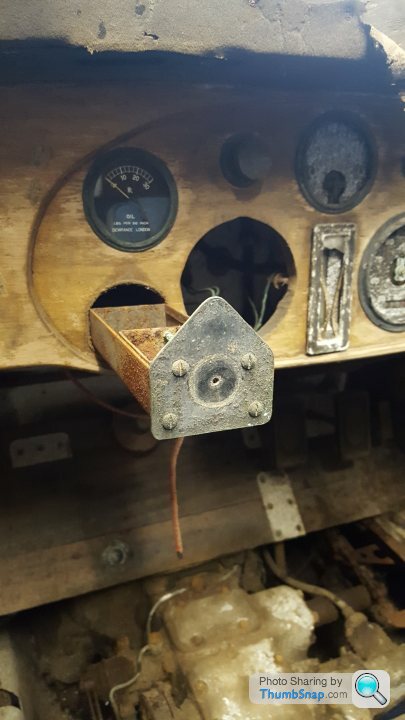
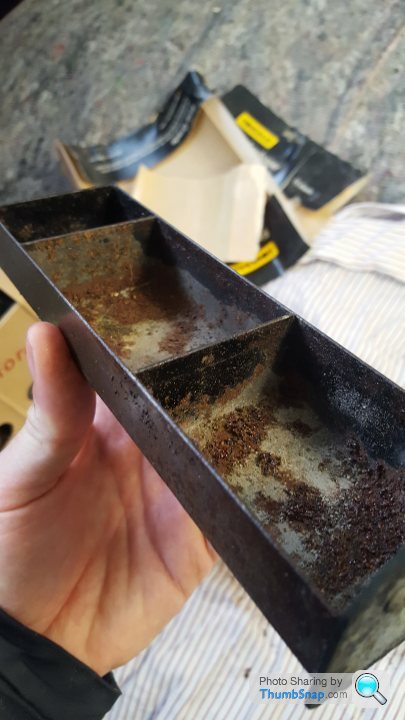
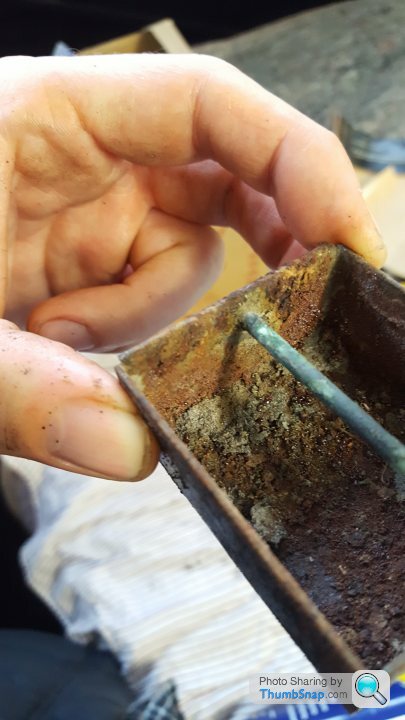
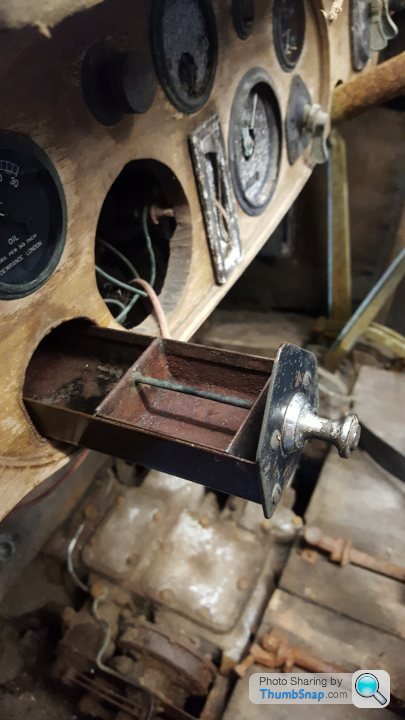
The dash now looked ok, so I moved on to getting the engine bay shipshape. Lots and lots of degreaser, paper towel, wire brush, cotton buds (and cups of tea!) later, we had a decent looking unrestored engine bay. Many little details have come to light - small missing brackets, mis-adjusted hand throttle linkage, missing tools - but nothing fatal. If we do a "before" and "after" image of both sides of the engine, I think you'd have to agree that it looks much better!
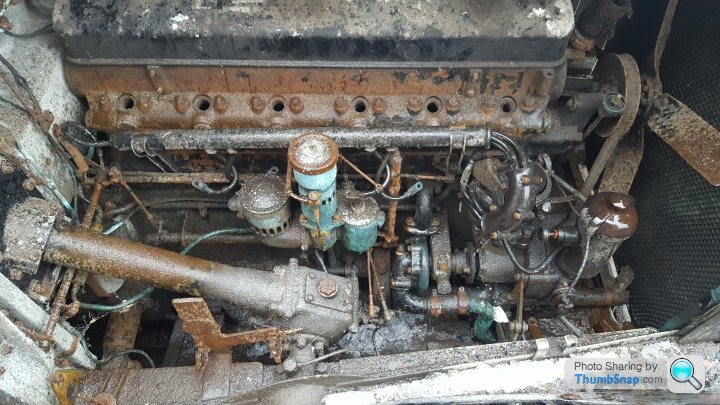
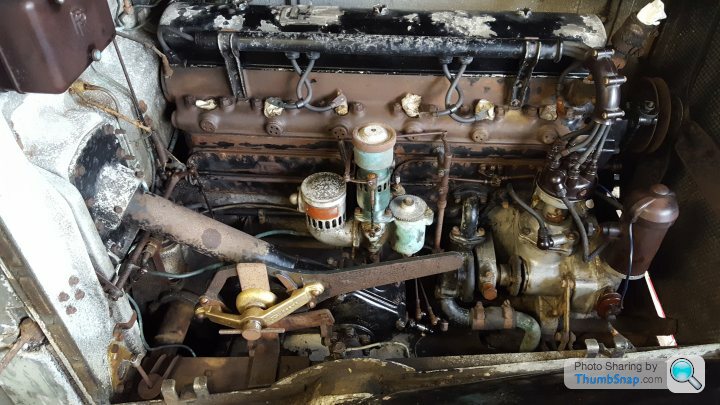
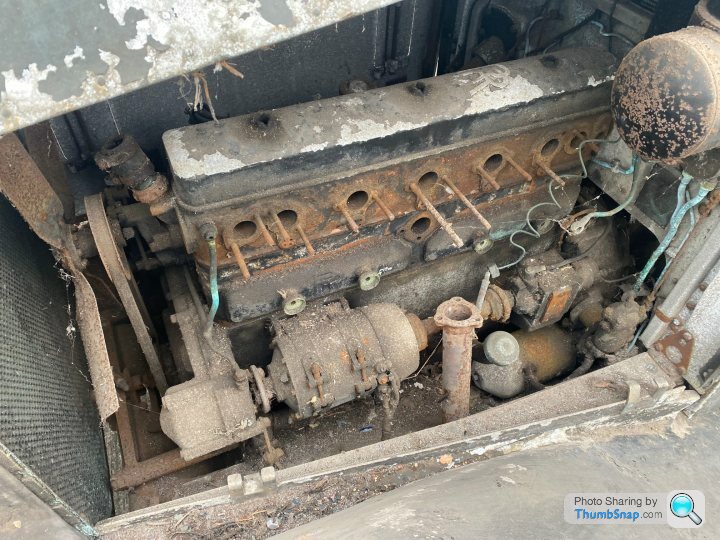
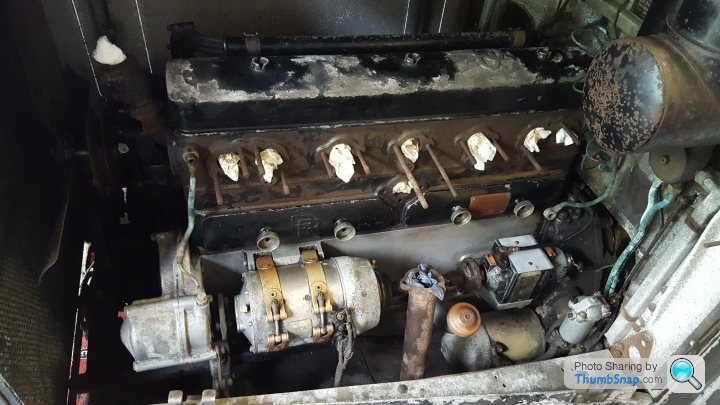
As I continued my battle to get everything moving again, the next items to tackle were the hand controls on the steering. These are for throttle, ignition timing and mixture enrichment. The levers in the middle of the wheel connect to rods running down the centre of the column and connect via complex linkages to their relevant controls. The throttle and mixture controls were easy to sort - the ignition was not. It controls the 2 (yes 2!) ignition systems (main is dynamo / coil - back up is magneto) via the most complex of linkages running down one side of the engine and then a second behind the engine over to the magneto on the other side!
I managed to get the side connected to the distributor to work ok, but the magneto would not budge. So there was nothing else for it but to remove it from the car and try to free it up. After much effort, it was all clean, but still refusing to adjust. By this point, my normally very forgiving wife had had enough of me stinking the house out with solvents from my office, so I had to admit defeat for now and refit the cleaned but still jammed part. Another one to add to the list, when the engine comes out.....
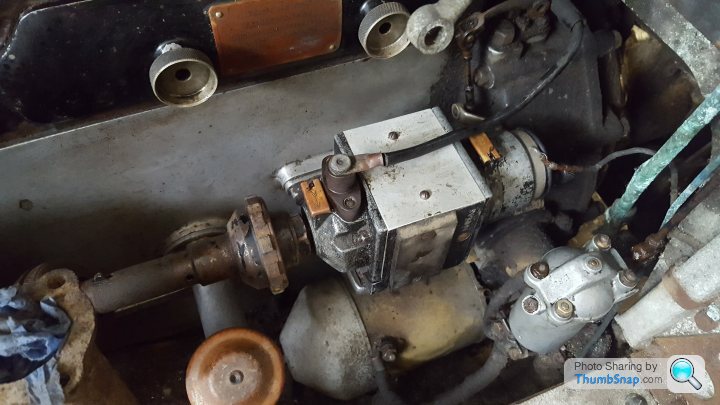
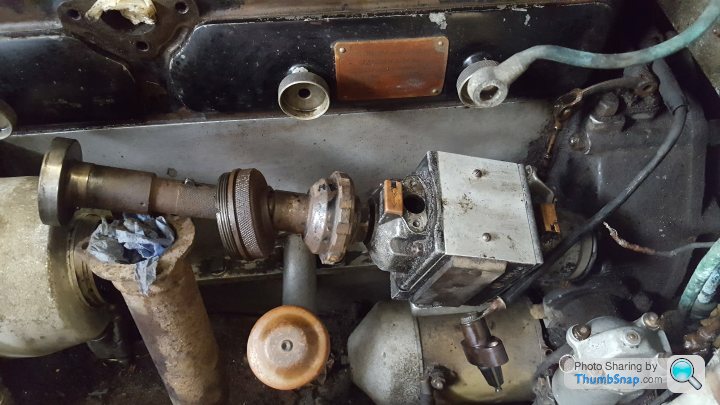
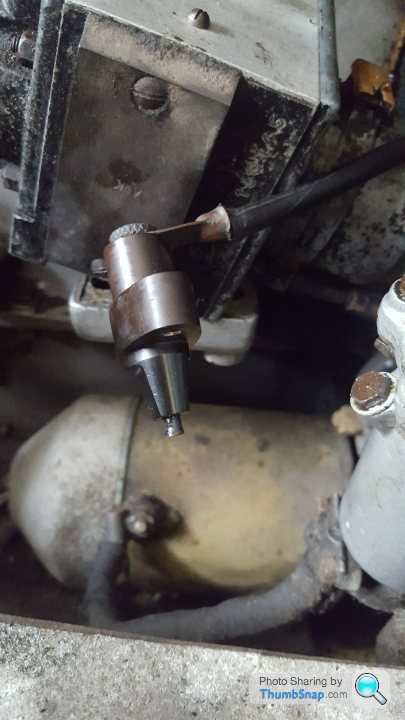
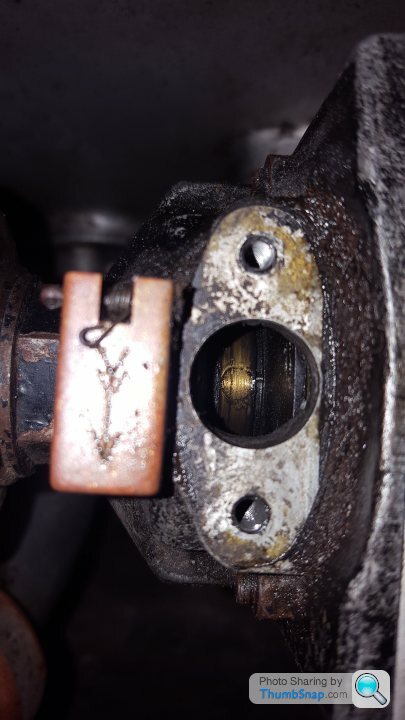
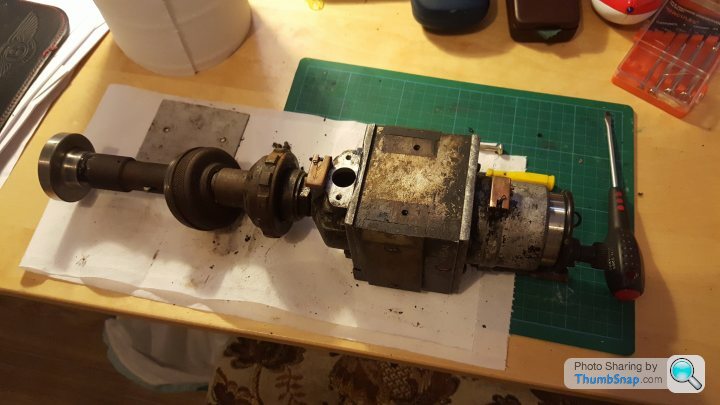
Now that the interior is stable and the engine bay clean, it was time to focus on axles and brakes... but that is for the next update.
Take care,
AF
Many thanks for the positive comments and suggestions - both about the leather and part replacements via 3D scanning and additive manufacturing.
I finally have a chance to sit down and update the thread - so here we have the Big Post-Easter Update!
Inspired by your comments, I have given the leather another complete clean and feed and we are now getting somewhere. It no longer smells and you are unlikely to catch anything nasty from it! I have been in contact with Steve Merrett at Leathercare Ltd in Knutsford on the subject - he is ex-Connolly and has been very generous with his information about the challenges of old leather. While I might get to a position where the current leather is stable, it may well not be strong enough anymore to take the loads associated with restitching etc. But time will tell. In other positive interior news, I have got the rear arm rest to move (!) and given it a clean.... so that is the leather "saved" for now.

Having got the leather sorted, I have turned my attention to the rest of the interior - notably the dash, pedalbox and front bulkhead. Again it has been a process of gentle cleaning.... the pictures below are the "before" / "after" the clean!



One element of the dashboard which puzzled me was the black "house" shaped object on the left side. After some struggling with it, I managed to get it to move and low and behold - a cigar ashtray! After some prodding and cleaning, I was surprised to find it still had ash in it from all those years ago..... !!! It all now moves freely and will be restored in due course.




The dash now looked ok, so I moved on to getting the engine bay shipshape. Lots and lots of degreaser, paper towel, wire brush, cotton buds (and cups of tea!) later, we had a decent looking unrestored engine bay. Many little details have come to light - small missing brackets, mis-adjusted hand throttle linkage, missing tools - but nothing fatal. If we do a "before" and "after" image of both sides of the engine, I think you'd have to agree that it looks much better!




As I continued my battle to get everything moving again, the next items to tackle were the hand controls on the steering. These are for throttle, ignition timing and mixture enrichment. The levers in the middle of the wheel connect to rods running down the centre of the column and connect via complex linkages to their relevant controls. The throttle and mixture controls were easy to sort - the ignition was not. It controls the 2 (yes 2!) ignition systems (main is dynamo / coil - back up is magneto) via the most complex of linkages running down one side of the engine and then a second behind the engine over to the magneto on the other side!
I managed to get the side connected to the distributor to work ok, but the magneto would not budge. So there was nothing else for it but to remove it from the car and try to free it up. After much effort, it was all clean, but still refusing to adjust. By this point, my normally very forgiving wife had had enough of me stinking the house out with solvents from my office, so I had to admit defeat for now and refit the cleaned but still jammed part. Another one to add to the list, when the engine comes out.....





Now that the interior is stable and the engine bay clean, it was time to focus on axles and brakes... but that is for the next update.
Take care,
AF
The large bomb shaped object under the magneto in the last pictures is the starter motor.... it also has handle for starting. It does have a lot of things which you can identify on modern vehicles - and some obvious differences. One being how to handle the switching of high electrical current loads. Just above the starter is a small silver upright box - this is the starter motor "relay" - but in this case it is a switch in an oil bath (like you would have on industrial switch gear in the 1960's), rather than a lightweight relay in modern applications. Only a year or so later R-R swapped to a relay system.....
It has been great fun working out the logic and operation of each of these items.
AF
It has been great fun working out the logic and operation of each of these items.
AF
Only just found this thread, great stuff!
As mentioned above, the American PB Blaster is a good penetrating oil, I've taken to using it myself, and gave my dad a can as well which has been effective on his old stuff too.
But one of my favourite recent toys for dealing with rusted up fasteners is a cheap electrical induction heater. It'll get stuff glowing red hot if needs be, but I prefer it to a blowtorch as you don't have to worry about what else may be in the firing line in crowded areas.
As mentioned above, the American PB Blaster is a good penetrating oil, I've taken to using it myself, and gave my dad a can as well which has been effective on his old stuff too.
But one of my favourite recent toys for dealing with rusted up fasteners is a cheap electrical induction heater. It'll get stuff glowing red hot if needs be, but I prefer it to a blowtorch as you don't have to worry about what else may be in the firing line in crowded areas.
gary71 said:
Coming on well Andy, does the engine turn over at all?
Hi Gary - that's one of the next challenges! I am regularly soaking the bores to try to free them up. The sump seems to be full of treacle (though showing "full") and I might try to get a breaker bar on the crank pulley to see if it will move at all. Before doing any of that though, I want to have a poke around inside the inspection plates (of which there are many!) to see the general state of the internal surfaces. If they are at all corroded, then I won't chance it and just go straight to a full strip down. PS - loving the images of the restored 911 out in the wild! Excellent work!
AF :-)
andyfeaver said:
gary71 said:
Coming on well Andy, does the engine turn over at all?
Hi Gary - that's one of the next challenges! I am regularly soaking the bores to try to free them up. The sump seems to be full of treacle (though showing "full") and I might try to get a breaker bar on the crank pulley to see if it will move at all. Before doing any of that though, I want to have a poke around inside the inspection plates (of which there are many!) to see the general state of the internal surfaces. If they are at all corroded, then I won't chance it and just go straight to a full strip down. PS - loving the images of the restored 911 out in the wild! Excellent work!
AF :-)
Louis Balfour said:
Now, I know very little about restoring cars of that age. But doesn’t it need dismantling to the last washer and every last thing replacing or refurbishing?
I am also itching to know what the OP decides. I think he's in the forensic analysis stage before tearing it down! I imagine the issue of restoration of cars like these is a hugely debated point. On the one hand, you want to get it nice and shiny (and reliable) but on the other, is the point of keeping as much originality as possible.
Difficult to know where to draw the line. If you're going to make it showroom fresh, arguably you may as well do a new build replica.
R56Cooper said:
Louis Balfour said:
Now, I know very little about restoring cars of that age. But doesn’t it need dismantling to the last washer and every last thing replacing or refurbishing?
I am also itching to know what the OP decides. I think he's in the forensic analysis stage before tearing it down! I imagine the issue of restoration of cars like these is a hugely debated point. On the one hand, you want to get it nice and shiny (and reliable) but on the other, is the point of keeping as much originality as possible.
Difficult to know where to draw the line. If you're going to make it showroom fresh, arguably you may as well do a new build replica.
My philosophy is to check everything over, make sure things like engines are thoroughly flushed through and have fresh oil etc, and then proceed on the basis of trying to get it going.
You tend to get one of the following results:
- it's totally dead, won't do anything, has to come apart anyway.
- it turns out to be perfectly happy and work just fine.
- it "works", but clearly needs further attention, short of being rebuilt.
- it's so bad that even though it nominally "works", it needs a full rebuild.
The key thing is, as long as you're careful not to make anything worse, you lose nothing by trying to see if things work, and even if they work very poorly, the manner in which they work poorly can tell you more about what you need to do.
Obviously if something is seized solid with rust or has a rod sticking out the block, you can be more confident in skipping straight to a full rebuild!
You tend to get one of the following results:
- it's totally dead, won't do anything, has to come apart anyway.
- it turns out to be perfectly happy and work just fine.
- it "works", but clearly needs further attention, short of being rebuilt.
- it's so bad that even though it nominally "works", it needs a full rebuild.
The key thing is, as long as you're careful not to make anything worse, you lose nothing by trying to see if things work, and even if they work very poorly, the manner in which they work poorly can tell you more about what you need to do.
Obviously if something is seized solid with rust or has a rod sticking out the block, you can be more confident in skipping straight to a full rebuild!
Hi all,
Just to respond to some of the great comments above.
I am very much still in the "forensic" stage of working out where the car is starting from. The cleaning and freeing up of things is as much about assessing condition as anything else. It has been fascinating to see how varied the degradation is - some items look like they did when they came out of the factory in 1932, others like they have spent 50 years at the bottom of the sea!
It will need to come apart completely in the end - the wiring is not safe - though some looks ok (on the outside), other parts (having been exposed to oil, petrol or UV light) are in a very bad state. It would be a massive fire risk to reconnect anything.
The end result of the restoration is still very much open in my mind - do I take it back to completely original spec (as in 1932) - so original colour, no rear lights mounted on the wings, only trafficators for direction - or see the changes as part of the car's history and view it as a continuation? As others have said, it is only original once, so I am currently on the "continuation" (with quite a lot of repair work) side of the argument.
Freeing the engine up is all part of the assessment process - and to make the eventual disassembly a little easier. I have no idea on the condition of the head (one of the main weaknesses of this engine) and, while it is apart, should I get hardened valve seats fitted etc to allow for modern petrol? Some 20/25 R-R owners I have spoken to have not done so, relying on fuel tank additives to protect their engines.
All good problems to solve! :-)
Take care,
AF
Just to respond to some of the great comments above.
I am very much still in the "forensic" stage of working out where the car is starting from. The cleaning and freeing up of things is as much about assessing condition as anything else. It has been fascinating to see how varied the degradation is - some items look like they did when they came out of the factory in 1932, others like they have spent 50 years at the bottom of the sea!
It will need to come apart completely in the end - the wiring is not safe - though some looks ok (on the outside), other parts (having been exposed to oil, petrol or UV light) are in a very bad state. It would be a massive fire risk to reconnect anything.
The end result of the restoration is still very much open in my mind - do I take it back to completely original spec (as in 1932) - so original colour, no rear lights mounted on the wings, only trafficators for direction - or see the changes as part of the car's history and view it as a continuation? As others have said, it is only original once, so I am currently on the "continuation" (with quite a lot of repair work) side of the argument.
Freeing the engine up is all part of the assessment process - and to make the eventual disassembly a little easier. I have no idea on the condition of the head (one of the main weaknesses of this engine) and, while it is apart, should I get hardened valve seats fitted etc to allow for modern petrol? Some 20/25 R-R owners I have spoken to have not done so, relying on fuel tank additives to protect their engines.
All good problems to solve! :-)
Take care,
AF
Gassing Station | Readers' Cars | Top of Page | What's New | My Stuff




